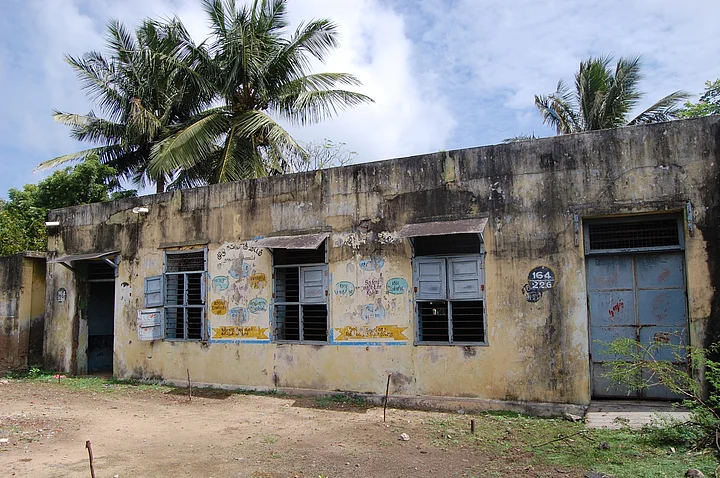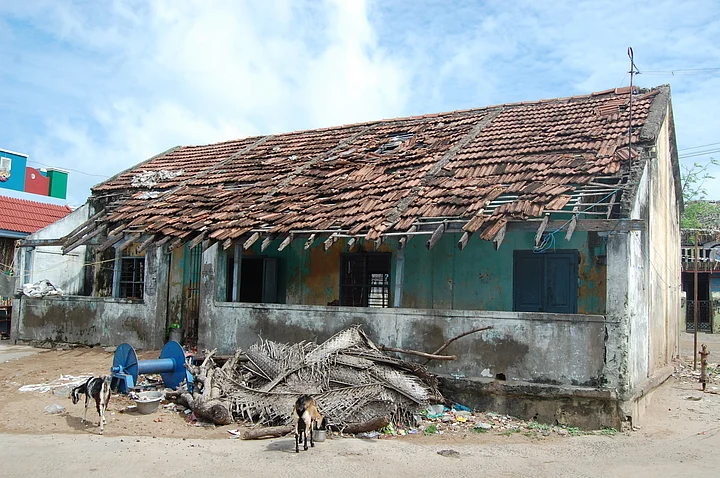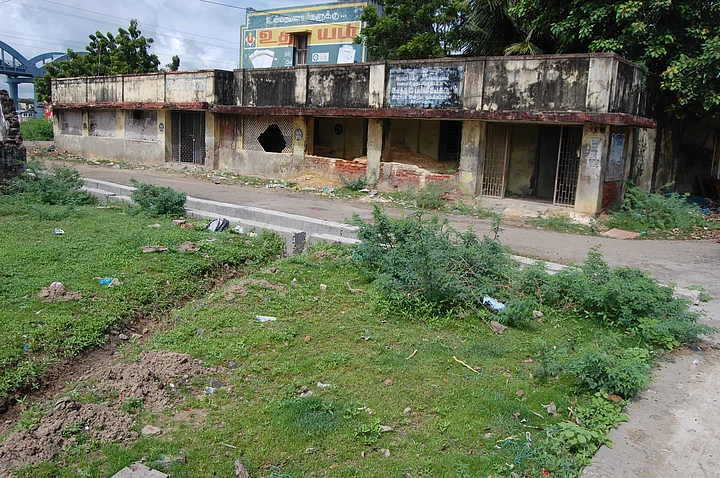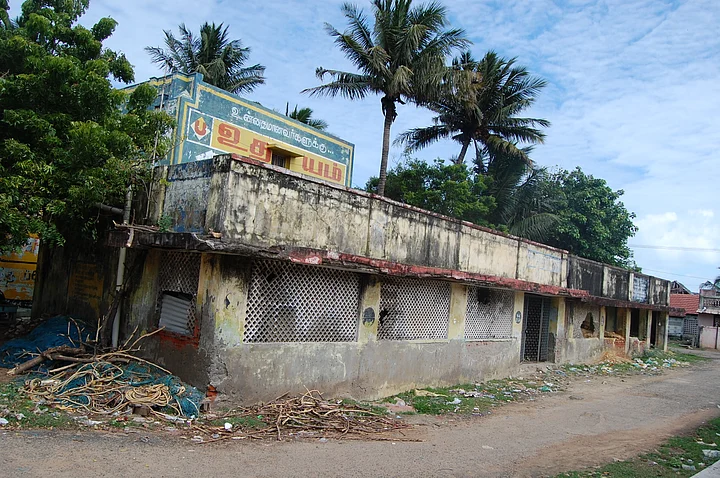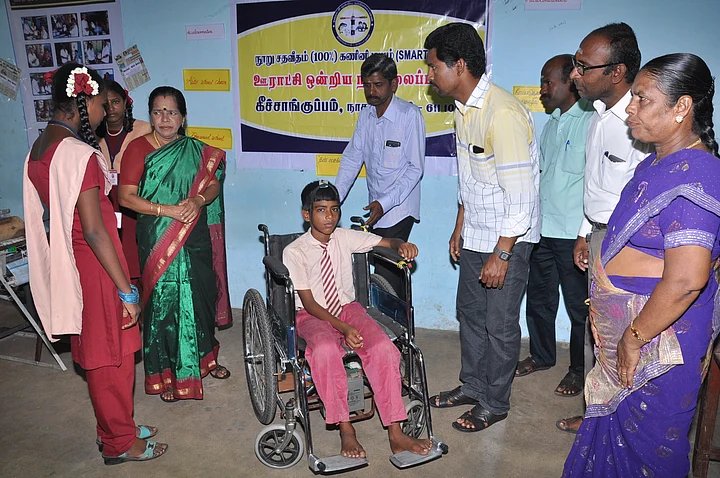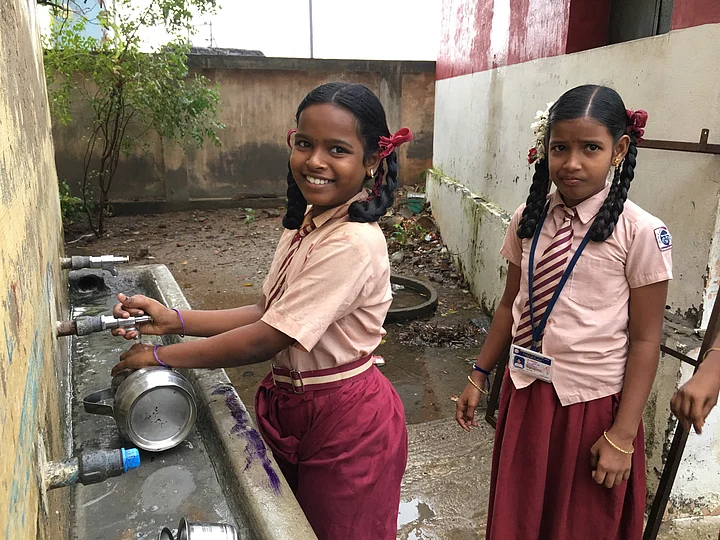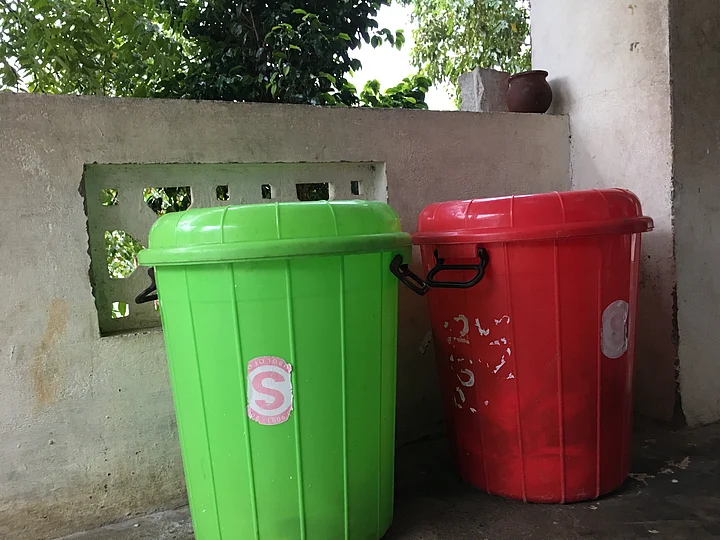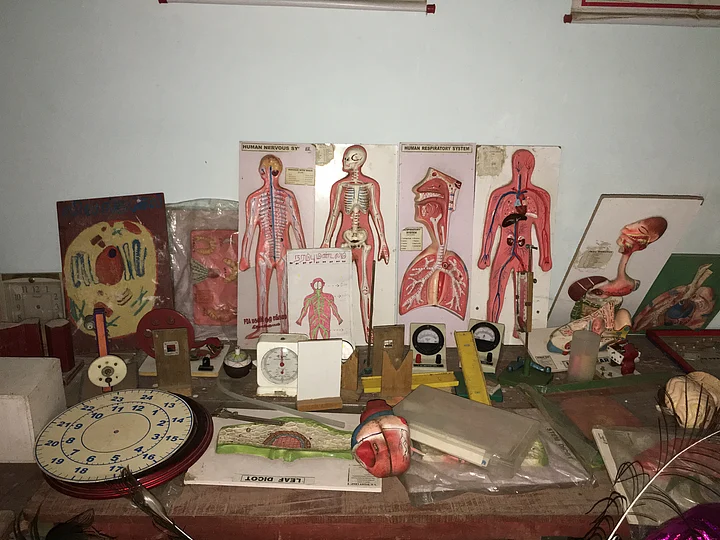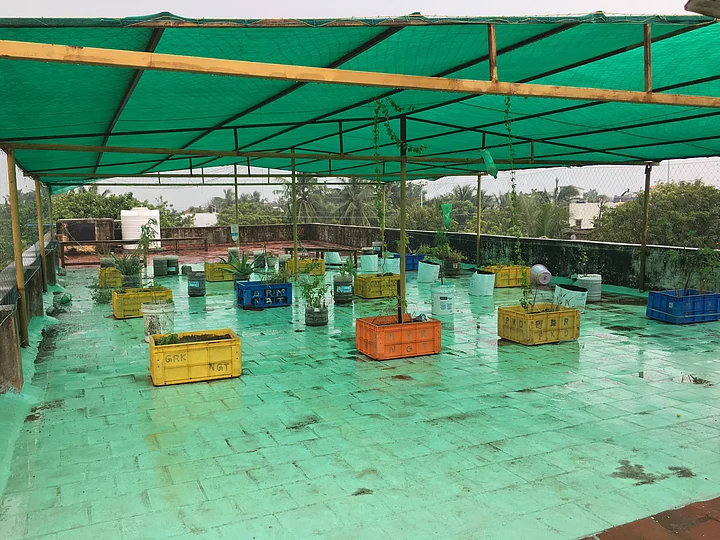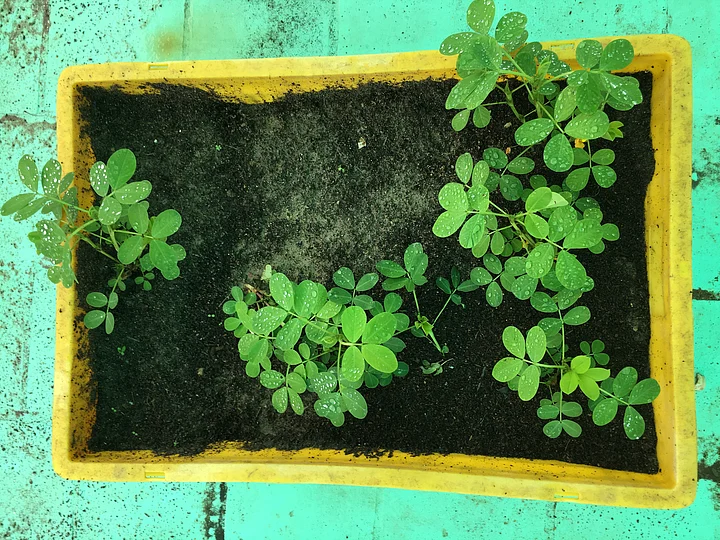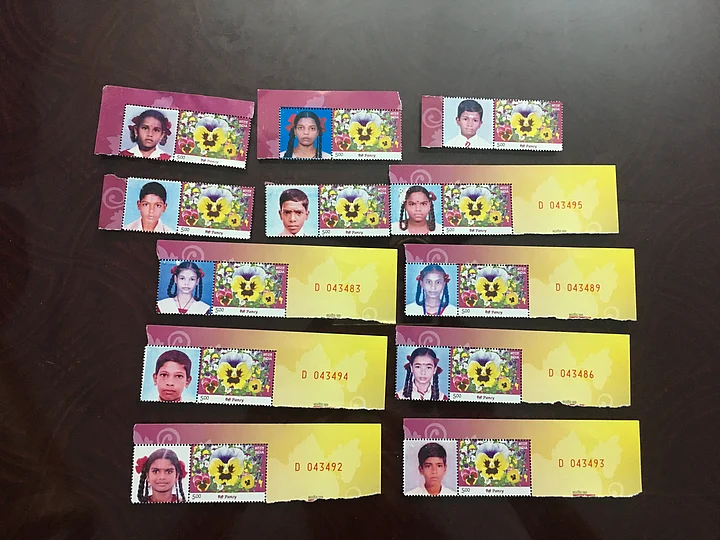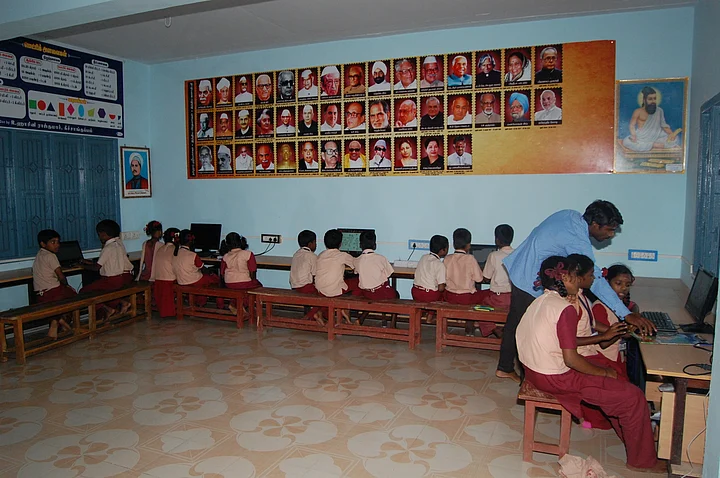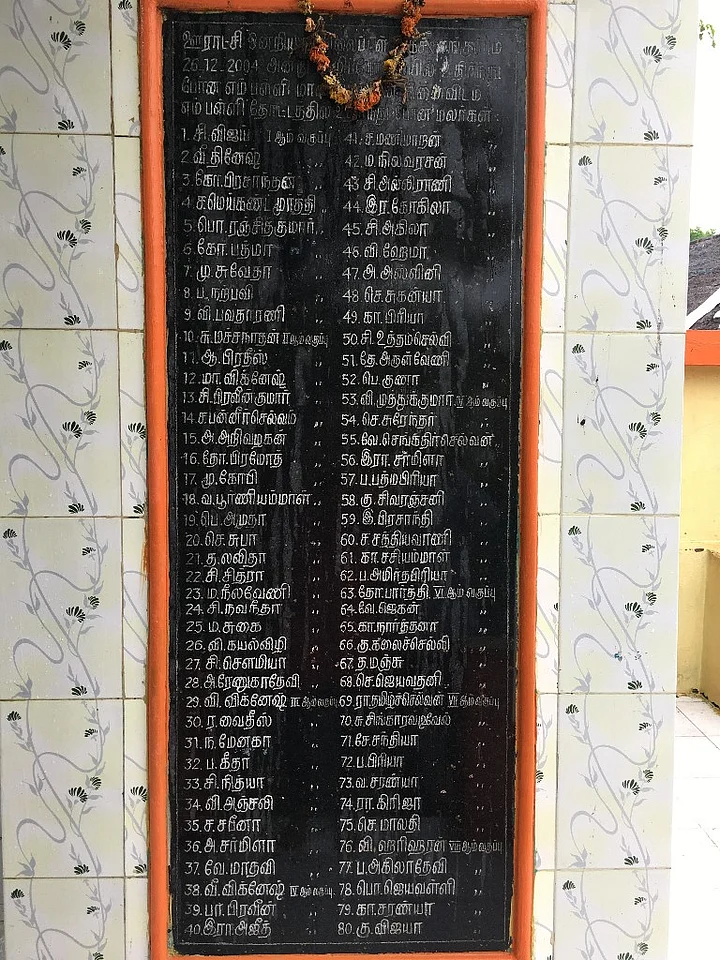(This story was first published on 26 December 2017. It has been republished from The Quint’s archives to mark the day a deadly tsunami hit Chennai in 2004.)
A brown stained building with a roof torn and windows shattered stood in Keechankuppam, a small fishing hamlet in Nagapattinam.
After the tsunami waves had calmed down and people came out of their safe shelters, they were rattled by sight in front of them. It took a long while for families to pick up the broken pieces of their lives and start over. Help poured in from everywhere and people began moving away from the coast into homes built by the government. New utensils and books were bought and memorials were built.
But this school in the village was left abandoned because the building was ruined beyond repair. There was a sense of fear looming over it.
80 children who studied in the school died in the tsunami.
I was 10 when the tsunami struck. We ran away and returned when everything was normal again. I wondered what the school would be like. The then Principal sent word to all friends of the kids who died in the tsunami, so I went to school and my teachers told that most of our friends had died... My best friend Sathyavani too. Even today I cannot forget her face.Kokila, who is now working as a teacher in the same school
Fast forward to 2017 – the school which was once in ruins has been recognised by the Tamil Nadu government as one of the best schools in the state with the highest number of children joining every year.
The Fear Is Real
Situated between the river and the sea, the people in the village feared sending their children to this school again.
The scene of giant waves gobbling up the school haunted them. Gradually, the strength of the school went down to just 92 in 2012, from 428 in 2004.
The school had to be renovated and so a teacher working in a village nearby was called in to give the school a second lease of life.
When the Going Gets Tough
A new school building came up in 2008. But still there were no kids joining school. Balu joined as the Principal of the school in 2013 and he took it upon himself to transform the lives of the children.
People of the village told him that if the school had facilities like no other, then they would fight their fears and send their children to school.
To begin with, he installed a projector and turned one of the classes into a smart classroom. By the next year, the entire school was turned 'smart' and everyone started looking up to Balu's school.
In 2015, 134 kids joined and the school was recognised by the Tamil Nadu state government as the school with the second largest number of children joining school in the state.
To overcome fear, we brought in smart classes and made the school worth coming to. Once the school got the reputation, many children came in. Today, at the cost for 45 lakhs, given by officers and the village, the school has become what it is today.R Balu, Principal
Balu got tsunami ravaged discarded furniture from banks and offices, repaired and polished them. Today, every classroom has tables with drawers and lockers.
Making wealth out of waste, literally, and a small reminder of the hardships they’ve endured.
Putting Private Schools to Shame
The school today has everything that a private school offers in terms of infrastructure. The classrooms are Wi-Fi enabled, it has science and computer labs, RO drinking water facilities, clean toilets, a huge playground, greenery all around, interactive classes, laptops and even a rooftop garden !
In the book, there will be only one picture, but here we have so much more. We can see places where we can never go in real life. For example, we usually see only one picture of Taj Mahal from the outside, but now we get to see what the roof looks like, what stones it us made of. I want to come to school without bunking a single day.Tamilarasi, Student
They have a recognised Parent Teachers’ Association and conduct regular meetings to address grievances. The management works in the way Parliament does - the Principal is the President, teachers are the chief ministers and the children are in charge of departments like sanitation and hygiene.
For the Village, by the Village
The school's transformation was possible owing to the overwhelming support from the villagers, service organisations and government departments.
The village was impressed with the efforts of the Principal and so requested him to give a list of items that they can donate to the school.
Just like a wedding where the family goes on a procession with gifts for their daughter, the villagers prayed at the local temple and walked to the school with fruits, vegetables, tables, chairs, stationery, black boards, skeletons, equipment for the labs and whatever each one could donate.
One of the fisherfolk who didn’t have the money to donate, gave a box of chalk pieces as a token of gratitude for building such a remarkable school.
But the Principal has bigger plans - at least five laptops for each classroom, exclusive computer science and physical education teachers, and school buses.
Showering Laurels
The PU school is one among 11 in its category in the State, and 100 in the country, to receive the Swachh Vidyalaya Puraska. The school got the coveted ISO stamp and was honoured with the Kamarajar Best School award by the Tamil Nadu state government.
Balu was awarded the Best Teacher National award by former President Pranab Mukherjee.
Memories Linger On
The school has a memorial set up for remembering those children who lost their lives to the tsunami.
The children who were traumatised by the deaths of their classmates are today serving as teachers in the same school.
Dear children, had you been alive, we would have given you such good education. Today you have not died, you have sowed the seeds of prosperity. Soon the children here will someday become IAS, IFS, IRS officers and you children should bless them all with such big dreams.An ode from Principal R Balu to the children who died in the tsunami
If you wish to help, you can contact Principal Balu at +91 8608227549.
(At The Quint, we question everything. Play an active role in shaping our journalism by becoming a member today.)

